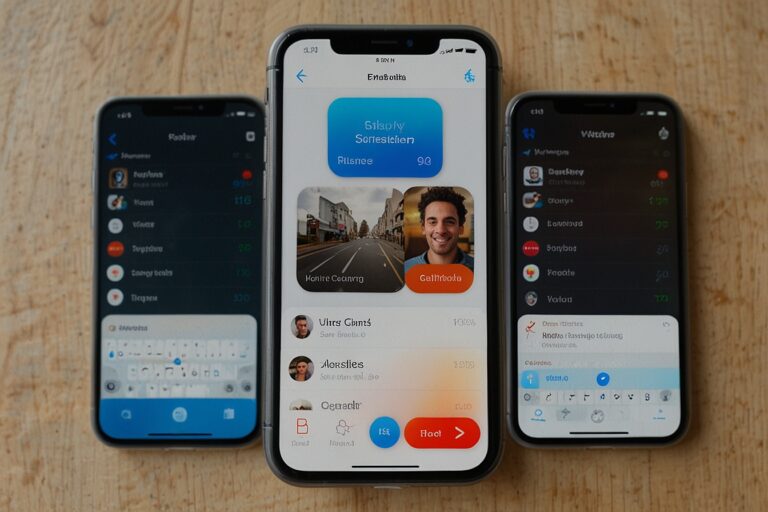
TL;DR
- Daydream, founded by e-commerce veteran Julie Bornstein, is launching an AI-powered fashion chatbot to the public in beta.
- The chatbot enables natural language and image-based queries, allowing users to shop by occasion, style, or even mood.
- Powered by multimodal search, the tool understands stylistic and social attributes, tailoring results to each user’s preferences.
- At launch, 8,000+ brands are available on the platform, with Daydream taking a commission on purchases made via external merchant links.
- Future updates will include personalized filters, social sharing, and AI-powered collection modifications.
Daydream Opens AI Chatbot Beta for Fashion-First Shopping
Daydream, the startup from former Nordstrom and Stitch Fix executive Julie Bornstein, is launching its long-awaited AI shopping assistant to the public. After a closed beta and a record $50 million seed round, the company is now offering users a new way to shop fashion using chat-based and image-based interactions—a feature set that sets it apart from traditional e-commerce search engines.
With an emphasis on fashion personalization, Daydream’s chatbot offers a conversational interface where users can ask for recommendations like “I need a dress for a summer wedding in Paris” or upload an image and refine their choices using additional prompts.
“We’re letting people express themselves how they actually think about fashion,” said Bornstein in an interview with TechCrunch.
A Style-First Onboarding Experience
New users start by building a “style passport”, a profile that captures their name, birthdate, budget, and favorite brands. This personalized data allows the AI to narrow results contextually based on occasion, climate, trends, and preferences.
Unlike legacy platforms that focus on item tags and static filters, Daydream leans on large language models (LLMs) to create a conversational and visual shopping experience.
Users can:
- Ask broad or niche style questions
- Upload images for visual matching
- Tap “Say More” to adjust colors, fabrics, or silhouettes
The left-hand chatbot console serves as a continuous interface to refine and re-query, replacing traditional filter menus with AI understanding.
Daydream AI Shopping Platform
| Feature / Metric | Details | Source |
| Public Beta Launch Date | June 25, 2025 | TechCrunch |
| Seed Funding | $50 million | TechCrunch |
| Number of Brands at Launch | 8,000+ | Daydream |
| Checkout Model | External merchant redirects | Daydream |
| Key Features | Multimodal AI chatbot, image-based search, style passport, personalized suggestions | TechCrunch |
| Notable Executives | Julie Bornstein (CEO), Maria Belousova (CTO) | TechCrunch |
Built on Experience, Powered by AI
Julie Bornstein’s experience at Sephora, Urban Outfitters, Nordstrom, and Stitch Fix shaped Daydream’s foundation. She was joined by Maria Belousova, former CTO of Grubhub, who now leads the technical side of the platform.
Together, they designed a system that understands stylistic nuances — such as embellishments, silhouettes, or socially contextual cues like what a wedding guest or a professional might wear.
“Traditional search shows keyword matches, but today’s customers describe products in natural, specific language,” said Belousova. “We use AI and computer vision to meet those expectations.”
Behind the Technology: Multimodal and Adaptive
Daydream’s AI engine analyzes both text and imagery, mapping user queries to detailed product attributes. These include:
- Stylistic attributes: silhouette, cut, color, embellishment
- Social context: who the item is meant for (e.g., bridesmaid, party guest)
- Visual similarity: matching uploaded images with lookalike products
This multimodal foundation is what sets Daydream apart from players like Amazon or Google Shopping, which still rely heavily on metadata and merchant tags.
Revenue Model and Brand Integration
Daydream does not currently support direct checkout. Instead, when a user selects an item, they are redirected to the retailer’s website to complete the purchase. The startup earns a commission on those sales.
At launch, over 8,000 brands are featured on the platform, with no onboarding fees for merchants. The business model resembles affiliate marketing, with the added advantage of AI-curated product discovery.
“We focused our first year on solving technical challenges,” said Bornstein. “Creating a unified catalog across thousands of brands required intense normalization and data structuring.”
The Road Ahead: Social Sharing and Smarter Feedback
Daydream has a robust roadmap planned for the next year, including:
- Custom Exclusion Filters (e.g., “No 4-inch heels”)
- AI Mix-and-Match Tools: Suggest items based on existing wardrobe pieces
- Social Sharing: Let friends/family vote on your collection
- Collection Adaptation: Users can fork another’s collection and make it their own via AI prompts
These features are meant to increase user engagement while retaining the AI-native interaction model. This strategic differentiation also positions Daydream in contrast with gamified dating-style shopping apps.
Competitive Landscape: Can Daydream Win in AI Commerce?
While Daydream holds a clear advantage in fashion expertise, it faces growing competition. Startups like Deft and Cherry are also building multimodal search engines focused on commerce.
Simultaneously, tech giants like Amazon and Google are deploying AI search enhancements across shopping results, making the space increasingly competitive.
However, Daydream’s narrow fashion focus, combined with deep executive domain knowledge and LLM-based architecture, may give it the staying power needed to outlast trend-driven newcomers.
“Our advantage is personalization at the core,” said Bornstein. “Fashion isn’t just data—it’s emotion, context, and identity.”
Final Thought: A New Era of Fashion Commerce
By blending chat interfaces, visual search, and natural language understanding, Daydream is helping shape the next phase of online shopping—one that focuses on intent and expression, not just filters and keywords.
As the platform matures, Daydream could very well become the fashion layer of the AI internet, much like how Spotify defines music curation or Pinterest inspires interior design.




